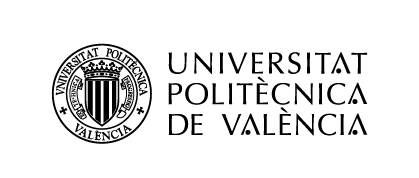This project was developed at the Polytechnic University of Valencia, Spain during the spring semester of 2024 as part of the Erasmus+ program. The original text is written in English.
The European Commission offers two prestigious titles under its green city awards program – the European Green Capital (EGC) for cities over 100 000 habitants and the European Green Leaf (EGL) for smaller cities with populations as low as 20 000. Winning cities actively engage their citizens in this transition, striving to enhance the urban environment, combat pollution, and bolster resilience to climate change.
This research aims to contribute to the advancement of urban sustainability practices through a focused analysis of EGC indicators in the context of Valencia, Spain, EGC 2024. The research investigates how these indicators can be effectively analysed and interpreted using geospatial analysis tools. For the study of urban sustainability, the reuse of open data is essential. Open datasets that are of high quality, interoperable, and standardized play a crucial role in facilitating comprehensive analysis and informed decision-making. The following open data sources are used in this study: Valencia City Hall, Instituto geográfico nacional (National geographic institute), Urban Atlas – Copernicus Land Monitoring Service.

The second part of the research focuses on creating a data model for each EGC indicator using UML class diagrams. The model is designed based on a comprehensive literature review of existing European Commission (EC) documentation, concepts for data specifications in the INSPIRE Directive and existing work, related to the themes of the individual indicators. The diagrams represent the structure and relationships of the data elements necessary for evaluating and monitoring each indicator in urban environments. Separate charts are created for each indicator. For green growth and eco-innovation, an existing study on the same topic is summarized. Climate change mitigation and adaptation are combined into a single chart. No chart is prepared for governance due to the distinct nature of this indicator. This section outlines the entities (classes), attributes and relationships within the data model to support the assessment of each indicator performance.
In the next stage, examples of GIS-based analysis for three EGC indicators in Valencia, Spain are presented. The indicators analyzed include air quality, sustainable land use, and sustainable urban mobility.
The air quality analysis involves a spatiotemporal study of air quality data, with results visualized through maps and diagrams. For sustainable land use, the analysis defines densely populated urban areas in a GIS environment, examines land use, and evaluates access to urban green spaces by neighborhood. In terms of sustainable urban mobility, the research assesses access to public bus stops within the city. In this study, the OD Matrix (Origin-Destination Matrix) of ArcGIS Pro is the tool used for network analysis.
In conclusion, the analysis revealed patterns in air quality, sustainable land use, and urban mobility in Valencia. The UML class diagrams effectively modelled the data, while GIS analysis showcased practical applications of the indicators, highlighting the importance of high-quality open data for reuse and reliability. application of theoretical concepts in assessing urban environmental sustainability. The study validated the importance of structured data modeling and geospatial analysis and also underscored the significance of open data principles and data quality in enhancing the reliability and transparency of research outcomes. Moreover, the identified limitations and recommendations for future research emphasize the need for continuous monitoring, refinement of methodologies, and integration of new data sources to enhance the accuracy and scope of sustainability assessments.
The methodology section of this study encompasses several elements essential for the analysis of the EGC indicators using geospatial tools. It includes the development of UML class diagrams to present a proposed data model, the selection and utilization of appropriate software tools utilized in this work, the descriptions of the open data sources employed, the process of preprocessing of the data, and the application of specific geospatial tools to facilitate spatial analysis. These methodological foundations directly support the subsequent analysis of air quality, sustainable land use and soil, as well as sustainable urban mobility in Valencia, Spain. For instance, the UML class diagrams guided the structured integration of diverse datasets necessary for assessing air quality across multiple monitoring stations.
At the beginning of the thesis, the key concepts that form the foundation of the research are introduced. This includes an overview of the EGC initiative and the indicators used to select the winner, along with a brief presentation of Valencia’s candidacy for EGC in 2024. The work also examines concepts related to open data and the application of Unified Modeling Language (UML) class diagrams to describe different classes and the relationships between them.





